Description
Dragonfly 2021.1 Full Cracked
Install Dragonfly and Crack it
Buy Now And Get Your Copy
Standard features
Featuring an easy-to-use user interface with intuitive workflows and an extensive set of tools for the multi-dimensional display, transformation, segmentation, registration, and measurement of multi-scale multi-modality image data, Dragonfly delivers qualitative and quantitative results for material characterization, structure properties, surface analysis, process evaluation, quality control testing, or any analysis function that requires a high-degree of accuracy.
| DATA IMPORT | |
|---|---|
| Dragonfly is the ideal framework for integrating data from multiple sources into a single environment, whether your images come from leading microscope and imaging hardware vendors or RAW files produced by academic software. | |
| Image stacks (.tif*, .tiff*, .jpeg, .jpg, .png, .bmp, .dib extensions). | |
| DICOM image files (.dcm extension). | |
| MRC (.mrc extension), REK (.rek extension), TXM** (.txm extension), CZI*** (.czi extension). | |
| RAW data (.raw and .pic extensions) with or without header files (.dat extension). | |
| Analyze 7.5 files (.hdr extension with accompanying .img extension). | |
| Support for time dependant data and RGB images. | |
| Support for hyperspectral and hyperdimensional images from EDS, EELS, SIMS, EBSD-imaging systems and ptychography (.am, .dm3, .dm4 extensions, and .h5 for pycroscopy). Beta version only. | |
| * Includes support for Hitachi SEM acquisitions. ** File format used by ZEISS Xradia 3D X-ray microscopes. Available for Dragonfly Pro only. *** File format used by ZEISS microscopes. Available for Dragonfly Pro only. |
|
| VISUALIZATION | |
|---|---|
| Dragonfly provides a powerful set of image review and interactive inspection tools that let you gain detailed insight into your 3D data. | |
| Display multiple datasets in fused views or across multiple scene views. | |
| Synchronize 2D and 3D views in the workspace to facilitate side-by-side comparisons of different datasets. | |
| MPR, oblique, and double oblique views in MIP, mIP, and average intensity projections. | |
| Visualization of time dependant data and hyper-dimensional images*. *Beta version only. | |
| Real-time high-quality 3D volume renderings with lighting, transparency, optimized presets, and sectionalization. | |
| Orthographic views with scale bars to get a better sense of an object. | |
| Sharply define objects or features of interest with Focus and Depth of Field controls. | |
| Manipulate tools include Track, Window Level, Pan, Cine, Zoom, and Walk. | |
| Clip tool to interactively clip image data, regions of interest, multi-ROIs, and meshes along orthogonal planes in 3D views. | |
| Visual Plane tool to interactively clip image data, regions of interest, multi-ROIs, and meshes in any arbitrary plane. | |
| Apply visual effects, such as look-up table functions, edge contrast, and window leveling, to enhance 3D visualizations. | |
| Edit and create look-up table functions. | |
| Quickly adjust the opacity of all objects visible in 2D and 3D views with a co-localized Opacity Settings console. | |
| Selectable background colors for 2D and 3D views. | |
| ANNOTATIONS AND MEASUREMENTS | |
|---|---|
| Tools to add annotations to 2D and 3D views and to extract measurements from image data and processed objects include the following: | |
| Add image and text overlays to 2D and 3D views to illustrate findings. | |
| Basic tools for measuring lengths, angles, Cobb angles, and areas. | |
| Point tool for extracting multiple intensities and positions. | |
| Area and depth probe tools for extracting measurements from datasets, multi-ROIs, and meshes. | |
| Profile intensity distribution with spot probes, line and path profiles, and within areas. | |
| Apply an averaging mode to profile intensities perpendicular to a line or path within a disk or square. | |
| Define paths to extract information about curved structures. | |
| Compute a range of measurements, in any oblique, for each slice within a dataset and for datasets as a whole. | |
| Per slice measurements in any oblique of moments of inertia, mean thickness, and perimeter for regions of interest. | |
| Feret diameter measurements (min, mean, max) for regions of interest, multi-ROIs, and meshes. | |
| Statistical properties for regions of interest that include volume, surface, Feret diameters, comparative volumes, and associated intensities. | |
| Anisotropy measurements (MIL and SVD) for regions of interest. | |
| IMAGE PROCESSING | |
|---|---|
| Post-processing functions available in Dragonfly include data restructuring, registration, and 2D, 3D, and 4D stitching. | |
| CT Reconstruction module for the tomographic reconstruction of cone-beam and parallel-beam projections (Beta version only). | |
| Crop datasets, invert data, and restructure data according to different analysis needs. | |
| Modify image spacing and adjust data offset and slope, position in space, and orientation. | |
| Apply thresholding operations to extract new datasets or contour meshes. | |
| Normalize the histogram of selected datasets to the histogram of a reference. | |
| Interpolate or remove unrepresentative image slices within a dataset. | |
| Create new datasets from marked image slices. | |
| Quickly remove small defects or replace lost or corrputed parts of image data with Inpainting. | |
| Automated matching processes to align slices and build a consistent stack of images. | |
| Multi-modality fusion with automatic and manual registration options. | |
| Maintain consistency for multiple objects by applying transformations that were applied to a reference object to other datasets. | |
| Automatic alignment of the centroid of selected objects, including image data, regions of interest, multi-ROIs, and meshes, with a reference. | |
| Image stitching to combine, or stitch, 2D/3D image tiles to create a single high-resolution image. | |
| Merge, or stitch, multiple volumetric datasets into a single 3D dataset. | |
| Combine, or stitch, multiple volumetric datasets into a single 4D dataset. | |
| IMAGE PROCESSING (FILTERING) | |
|---|---|
| Dragonfly’s extensive image processing toolkit features filters to smooth images, sharpen edges, correct uneven shading, extract features, and more. With selectable 2D and 3D settings and user-specified kernel sizes, you can combine multiple filters together as a workflow, which can be saved and applied to a batch of images for automated processing. | |
| Gradient-domain fusion filter for removing inter-image discontinuities from registered image stacks. | |
| Ring artifact removal filter. | |
| Arbitrary Angle, Horizontal, and Vertical destriping filters. | |
| Comprehensive filtering (denoising, segmentation, image enhancement) for trained deep learning models. | |
| Contrast adjustment (CLAHE, Histogram Equalization, Local Histogram Equalization, Slope Map filters). | |
| Dynamic range expansion with Normalization filter. | |
| Filters for detecting vessel-like or tube-like structures and fibers (Frangi, Hessian filters). | |
| Edge enhancement (Canny, Difference of Gaussian, Laplacian, Prewitt, Scharr, Sobel filters). | |
| Filters for working in the frequency domain (Discrete Fourier Transform, Inverse Discrete Fourier Transform). | |
| Morphological operations (Dilate, Erode, Open, Close, Top Hat transforms). | |
| Filters for segmentation (K-Means, Mini-Batch K-Means). | |
| Shading compensation (Histogram Balancing, Manual RBF*, Polynomial filters). | |
| Sharpening (Gaussian High Pass, Unsharp filters). | |
| Smoothing (Anisotropic Diffusion, Bilateral, Gaussian, Lipschitz, Mean, Mean Shift, Median, Non-Local Means*, Percentile, Wavelet, and Rank filters). | |
| Texture analysis (Gabor, Image Moments, Local Binary Pattern, Membrane Projections filters) | |
| Thresholding (Adaptive, Adaptive Gaussian, Isodata, Li, Local Otsu, Mean, Minimum, Niblack, Otsu, Sauvola, Triangle, Yen filters). | |
| Create new datasets from arithmetic operations. | |
| Extract information about intensity value changes with Gradient and Divergence filters. | |
| Create your own filter effects by convolving an image with a customized 2D or 3D kernel. | |
| Accelerate repetitive post-processing tasks by applying saved image filtering workflows. | |
| Process multi-scale images in selected operations and choose different geometries and data types for outputs. | |
| * Available for Dragonfly Pro only. | |
| SEGMENTATION | |
|---|---|
| Image segmentation and intuitive masking operations in Dragonfly let you quickly identify and label regions of interest to gain detailed insights into material structures and properties. | |
| Segmentation Wizard, which provides an easy-to-use, guided workflow for implementing deep learning and classical machine learning segmentation of multi-dimensional images. | |
| Deep Learning solution for developing new neural networks, but also to train, reuse, and repurpose existing models for segmentation tasks. | |
| Advanced machine-learning plug-in that allows you to train a classifier within a limited sample so that it will learn how to segment the pixels of the whole dataset or other similar datasets. | |
| Active Contour tools to generate regions of interest, multi-ROI, and surface meshes from selected paths. | |
| Interactive thresholding, partitioning, histographic, and automatic object segmentation. | |
| Refine thresholded segmentation results by isolating objects of a certain size or by removing small objects. | |
| Quickly edit automated segmentation results by working in Exclusvie mode with the Brush tools. | |
| Paint tools include 2D/3D Brush, Point-and-Click, Grow, Smart Grid, and Snap. | |
| Rectangular, ellipse, polygonal, freehand region selection tools. | |
| Automatically skeletonize regions of interest or get the skeleton of an ROI as a graph. | |
| Boolean and morphological operators. | |
| Watershed transform*. | |
| Compute 3D and 2D watersheds to fully segment image data. | |
| * Available for Dragonfly Pro only. | |
| QUANTIFICATION | |
|---|---|
| Whether analyzing pores, fibers, grains, phases, or anything else, Dragonfly’s quantification and analysis tools give you powerful options for counting, measuring, and characterizing image features. | |
| Automatically find, classify, count, sort, and measure objects with parameters that include shape, orientation, intensity, and other parameters. | |
| Automatic object splitting and merging*. | |
| Volume and 2D metrics, as well as porosity*, particle, and void analysis. | |
| Interfacial surface computations. | |
| Interactive tabular and histogram reporting. | |
| Dynamic re-coloring by measurement. | |
| Common bone morphometric measurements, as described by Bouxsein et al. 2010, JBMR 25(7):1468-86, from segmented bone regions**. | |
| * Available for Dragonfly Pro only. ** Available as a separately licensced feature. The Bone Analysis module is not a standard feature. |
|
| 3D MODELING | |
|---|---|
| Create meaningful and informative visualizations of polygonal models, vector fields, and spatial graphs generated from image data and segmented objects, or from simulations. | |
| Generate polygonal models from 3D image data and segmented objects. | |
| Generate color-coded meshes showing referential values of the local thickness between boundary points. | |
| Visualize scalar quantities with pseudo-colors and interactive filtering with opacity. | |
| Extract interfacial meshes from segmented phases. | |
| Graph three-phase boundaries and compute throat thickness from selected regions of interest. | |
| Surface simplification methods to enable real-time interactive visualization of large, complex meshes. | |
| Surface refinement through subdivision and smoothing of mesh points. | |
| Compute convex hulls from segmented objects and meshes. | |
| Export to CSV or to standard mesh files for 3D printing. | |
| Iterative closest point registration to automatically register meshes with a reference. | |
| Generate color-coded deviation maps from the normals of two sets of meshes. | |
| Ready-made framework for performing a wide range of pore network simulations (Pore Network Modeling). | |
| Advanced tools for vector fields and flow visualizations, originating from measurements or simulations. | |
| Reconstruct porous, dendritic, and fracture networks from 3D image data or simulations. | |
| Create spatial graphs, in which nodes are the branching points and endpoints, and segments are the lines connecting the nodes. | |
| Conduct detailed analyzes of selected graphs, plot tortuosity distributions, as well as prune graphs with the Graph Analysis tool. | |
| PRESENTATION AND ORGANIZATION | |
|---|---|
| Reveal key insights and share your research with annotated high-resolution screenshots and tell dynamic stories with easy-to-produce animated sequences that can be exported as HD video files, animated GIFs, or uploaded to the web. | |
| Produce animated sequences and movie clips from camera rotations and user-defined sequences and playback your project directly in Dragonfly. | |
| Play and record animations that automatically scroll through 2D image stacks. | |
| Export screenshots and create high-resolution custom-sized images for printing. | |
| Automatically record your full screen, with cursor highlighting, while working with Dragonfly. | |
| Collaborate with colleagues by saving sessions that include all imported data and processed objects. | |
| Organize, manage, and share data and analysis results with Dragonfly’s intuitive Organizer*. | |
| * Available as a separately licensced feature. The Organizer is not a standard feature. | |
| EXTENSION AND AUTOMATION | |
|---|---|
| Dragonfly’s 3D analysis workflows can be customized with Python or extended with custom add-ons that implement specific tasks and workflows to suit your research objectives. | |
| Access the Infinite Toolbox to browse for and download extensions from the Dragonfly user community that implement new features and workflows. | |
| Record and play macros to automate repetitive tasks. | |
| Build and edit complex macros or combine multiple macros for batching. | |
| Build new features with the powerful image processing algorithms freely available in the Python ecosystem. | |
| Access the Python console to script routines. | |
| Extensive technical documentation package, targeted developer tools, and Jupyter Notebook tutorials for developers interested in authoring plugins for Dragonfly and for users who want to better understand the conventions and structure of the product. | |
| Apply real-time changes as images are captured by a scanning or microscopy system*. Applicable tasks include classification, slice registration, filtering, or operations saved in a macro file. | |
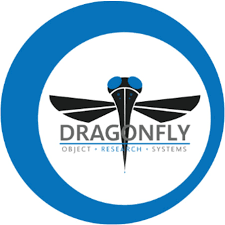
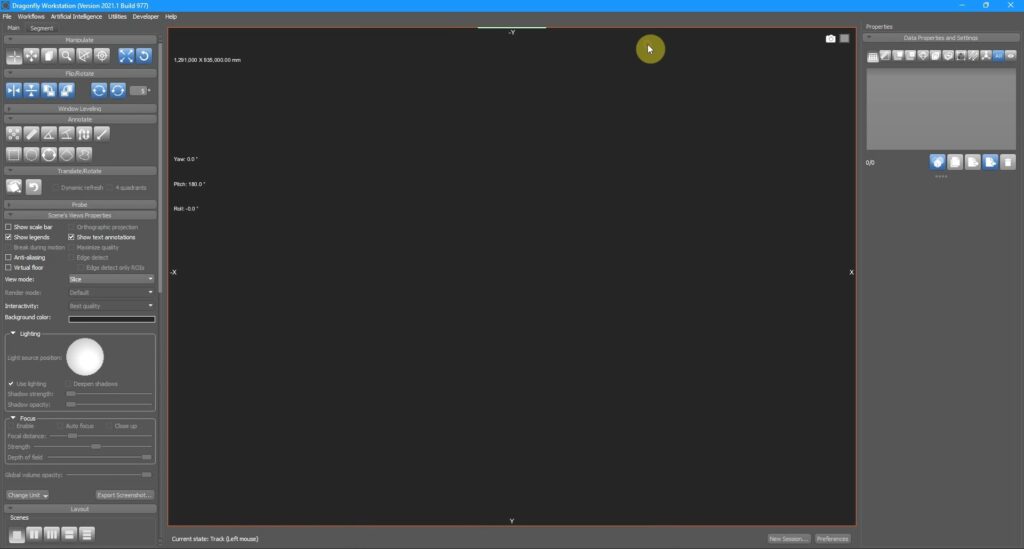
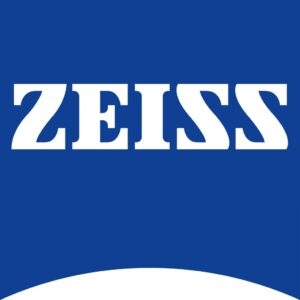
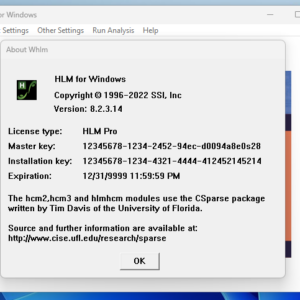
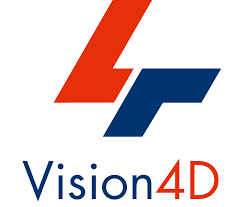
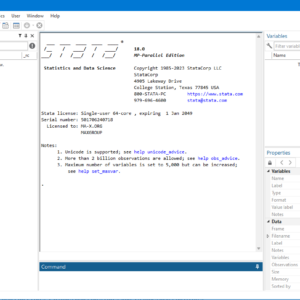
Reviews
There are no reviews yet.